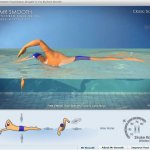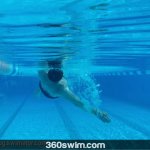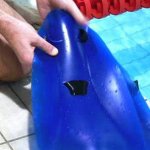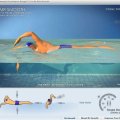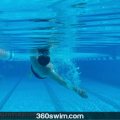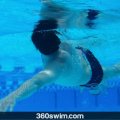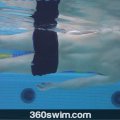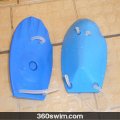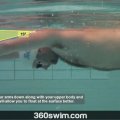WHAT'S YOUR SWIM TYPE? (CUSTOM TAILORED SWIM CLASSES)
The guys over at SwimSmooth have done it again.
After introducing us to the Wetronome (a tech gadget to help you with your stroke rate) and Mr. Smooth (an app that shows swimming technique from all angles at all speeds), SwimSmooth has now produced SwimTypes.com. Let me show you what it is all about.
Quick Jump To:
SwimSmooth's coaches came up with a new way to teach swimming:
we are all built differently, so we swim differently, and therefore need customized swim instruction to improve effectively.
I'm sure many of you have been in swim classes where the coach asked you to do a drill that just didn't make sense or didn't seem possible. Maybe your body simply wasn't suited for it, yet! With the right drills for your swim type, you can progress much faster.
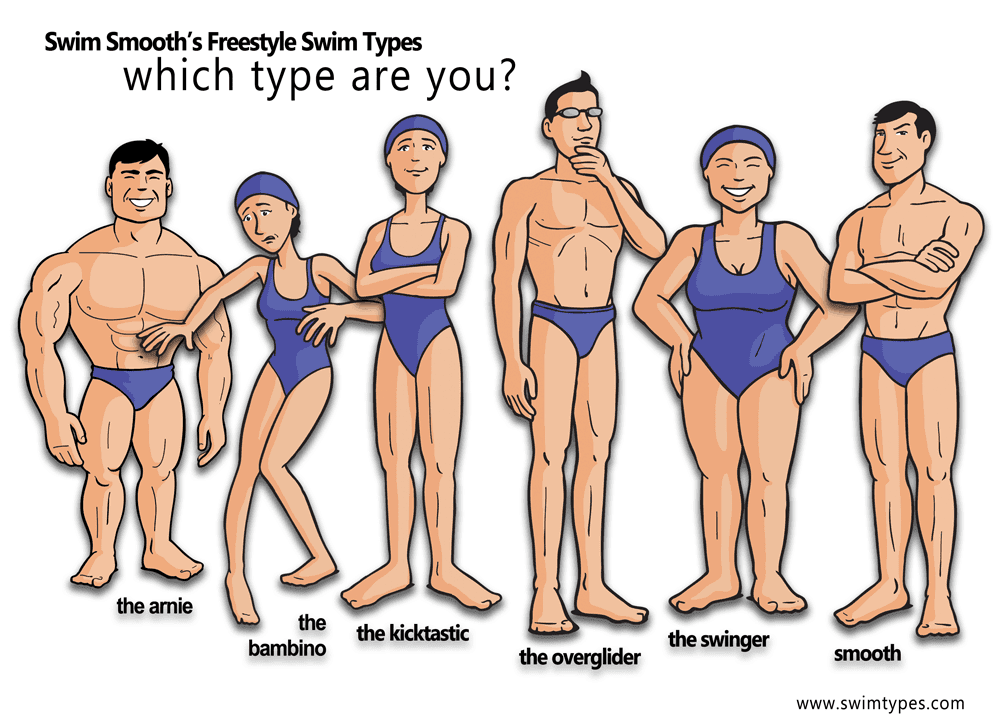
The Six Swim Types Explained
SwimSmooth identifies six main swim types. Let's look at each one in detail:
Arnie or Arnette
Assuming this is a nod to the legendary Arnold Schwarzenegger, you can imagine what that looks like!
You're likely an athlete with a strong, muscular build, maybe from football, judo, or weightlifting.
Swimming, which demands long, flexible muscle movement, can be tough for you because dense muscle mass reduces buoyancy.
To improve, focus on your body position and flexibility and yes, eat your vegetables!
🎥 Learn more about Arnie
Bambino
If you're smaller-framed and struggle with breathing or propulsion, you might be a Bambino.
Your key to progress is building upper-body and core strength while improving your catch technique.
Next time you feel like you're spinning your wheels in the water, remember, you might just be a Bambino.
🎥 Learn more about Bambino
Kicktastic
Well, the name says it all, you just kick too damn much!
Kicking is great for sprints but exhausting for long-distance swimming.
Focus on rhythm instead of speed. A light two-beat kick is usually enough. Watch Grant Hackett's underwater video to see how top swimmers keep their kick efficient.
To improve, use your arms more and strengthen your core to stabilize your body.
🎥 Learn more about Kicktastic
Overglider
Overgliders pause too long between strokes, creating a "dead spot" that slows them down.
Don't despair!
You can fix this by catching the water earlier and slightly increasing your stroke rate.
Try using a Wetronome to find your ideal rhythm and smooth out your stroke timing.
🎥 Learn more about Overglider
Swinger
No, not that kind of swinger!
In swimming, a Swinger rotates the arms too much around the body instead of rolling the hips to drive movement.
This leads to poor efficiency and even shoulder strain. Spend more time rolling from hip to hip, keeping your head still and aligned.
Consider using one of these helpful technique tools to improve your stroke balance.
🎥 Learn more about Swinger
Say no to being a Swinger and become Smooth.
Smooth
If you're Smooth, congratulations.
You make swimming look effortless.
Your movements are efficient, relaxed, and rhythmical. A joy to watch.
For inspiration, check out Alexander Popov's freestyle video.
Even Smooth swimmers can work on refining their core strength, catch, or kick.
🎥 Learn more about Smooth
🎥 Hear from the Swim Smooth founders
Finding Your Swim Type
So, after exploring these six Swim Smooth types (Arnie/Arnette, Bambino, Kicktastic, Overglider, Swinger, and Smooth) which one are you?
Knowing your type helps you choose drills that fit your body mechanics and make progress faster.
There's no perfect stroke, but understanding your starting point is the key to swimming smarter, not harder.
Let me know in the comments which swim type describes you best and what you're working on improving!
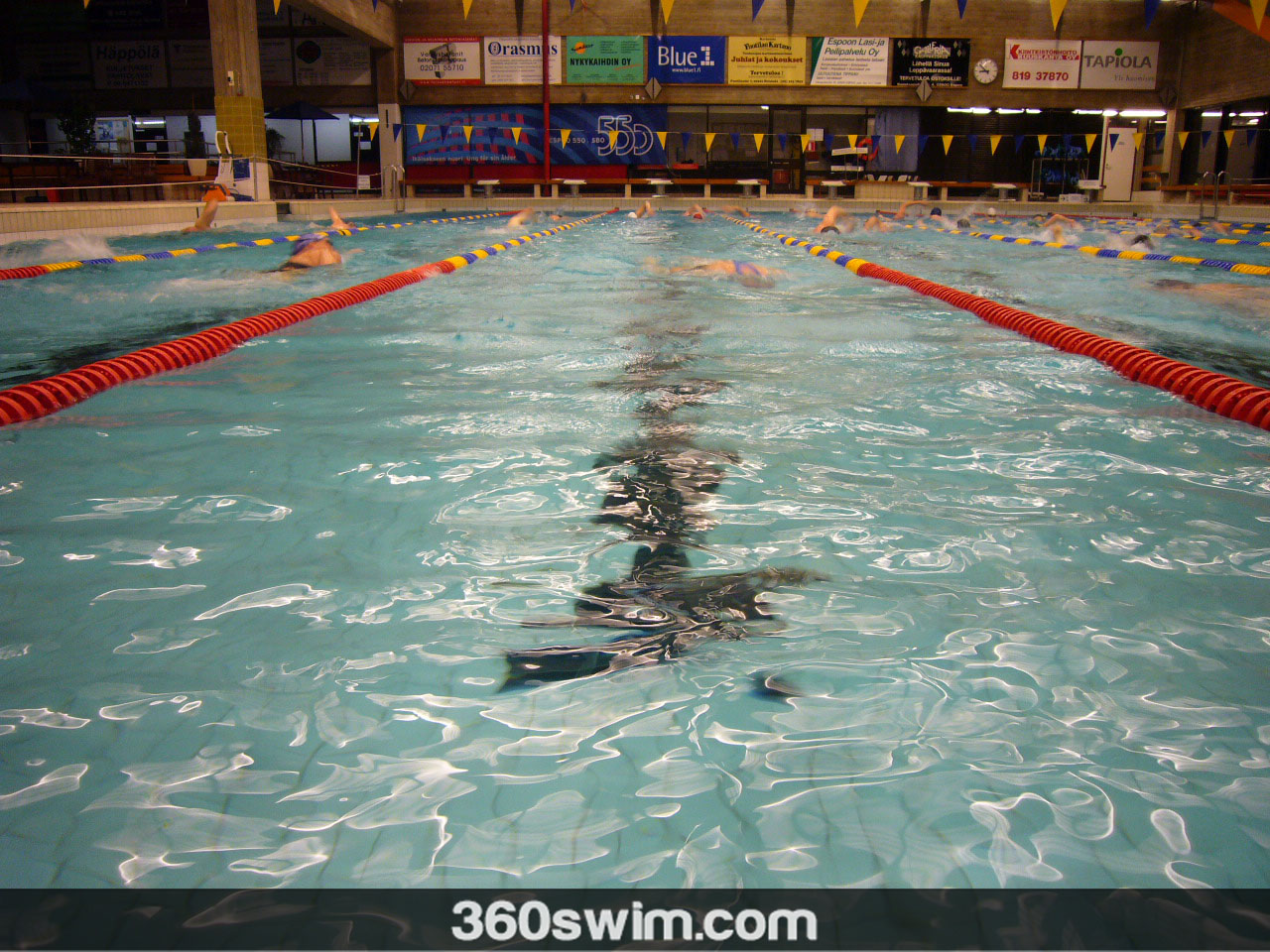
Frequently Asked Questions
What are the six Swim Smooth swim types?
The Swim Smooth system identifies six main swim types: Arnie/Arnette, Bambino, Kicktastic, Overglider, Swinger, and Smooth. Each describes a different swimming style and body characteristic.
How can I find out which swim type I am?
You can identify your type by comparing your stroke traits and body build to the six Swim Smooth profiles or by taking their online assessment at SwimTypes.com.
Can my swim type change over time?
Yes. With targeted training and awareness, you can evolve from a less efficient type (like Arnie or Overglider) to a more balanced and efficient swimmer, such as the Smooth type.
Which swim type is considered the best?
The Smooth type represents an efficient, relaxed, and balanced swimmer, often used as a model technique. However, every swimmer can benefit from drills specific to their own type.
Why is understanding my swim type useful?
Knowing your swim type helps tailor your drills, focus areas, and stroke corrections to your body mechanics-saving effort and improving performance faster.
Do professional swimmers fit into these swim types?
Yes. Even elite swimmers display these traits to varying degrees. Coaches often use Swim Smooth classifications to fine-tune elite training plans.
 LNURL1DP68GURN8GHJ7URP0YHRXD3SWDMKJMFWVDHK6TMVDE6HYMRS9A4HSCNCWFXSH3NN0H
LNURL1DP68GURN8GHJ7URP0YHRXD3SWDMKJMFWVDHK6TMVDE6HYMRS9A4HSCNCWFXSH3NN0H
